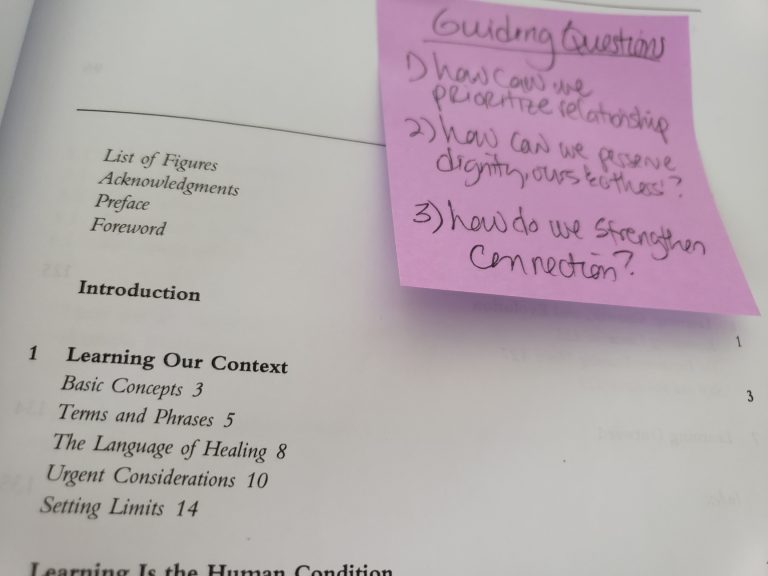“Building a Trauma-Responsive Educational Practice: Lessons from a Corrections Classroom,” is the first book to specifically address the impacts of trauma on adult learning, and comes from my experience working with highly traumatized learners. Writing from this new perspective meant I had to develop new language, or repurpose existing terms and phrases, but I didn’t realize the importance of this new language in the beginning.
When I was writing I had one of those experiences that is both deeply irritating and illuminating at the same time. Partway through the book, I convinced myself I didn’t know enough to write any more without help. I found a developmental editor and handed off my first few pages. About a week later, an eye-popping feedback email dropped into my Inbox.
The comments were largely ignorant nonsense, so I ended the relationship. But that ignorance taught me that I needed to define terms and identify starting points, especially for new language and major concepts. It was an incredibly helpful, if annoying, piece of learning, that led directly to this post.
Below are key concepts about trauma, language, and learning, along with very brief definitions. Some of these are in the book, some have come up since publication. I’ll link to articles on each as they’re published.

How are you defining ‘educational trauma’?
Dr Lee Ann Gray has defined emotional trauma as the “emotional and spiritual wounds inflicted during the process of learning, as students are shamed for HOW they learn (2019).” Trauma that occurs in learning environments does far more harm than we understand.
Why trauma-responsive, and not ‘sensitive’ or ‘informed’?
“Responsive” indicates both knowledge and action grounded in that knowledge. It’s a better description of my approach than “informed” or “sensitive,” which are more knowledge-centered.
Why don’t I use the word ‘healing’ when talking about learning?
The word “healing” is incomplete when talking about and working with trauma. Professionally, most adult educators don’t think of themselves as healers and neither do I. We need new language to think about and practice addressing trauma.
What do you mean by “acknowledge, integrate, release, and explore”?:
I propose this process as an alternate, to ‘healing’ for those of us who don’t actively think of ourselves as ‘healers’. I also think it is more descriptive of how we engage with traumatic experience in our daily lives.
Why is safety such a confusing topic?
Safety is confusing for a couple of reasons. First, it means something different for everyone and your requirements for safety and mine could very easily clash. Second, some people have not experienced safety, and expecting them to ‘feel safe’ in another unknown space is unreasonable.
Why do settling and expanding matter so much in learning?
True learning, deep learning, requires a state of internal calm. This state is similar, if not identical, to what happens when we settle our bodies and allow our nervous system to expand. We can learn without this internal calm, but the learning isn’t as integrated or expansive.
What is cultural rebalancing?
My approach to this topic is through Dr. Edwin Nichols’ “Philosophical Frameworks of Knowledge,” introduced in his book Cultural Competency in America’s Schools. He outlines four large groupings of people (by race/ethnicity), illustrating how each engages with information and knowledge.
The Euro-white approach to learning is valid, but its fear of and attempts to eradicate other frameworks is the basis for white supremacy. I don’t know if there really is a path to rebalance, but considering balance, instead of removal, is better for me.
Why do you say “expansive learning is evolution?”
Humans are learning creatures. We are hardwired to learn, and then use that learning, one way or another. Learning while we are in survival mode keeps us focused only on survival. Survival is essential, but we can learn in ways that promote survival AND nurture a creative, caring future. Trauma-responsive education is one way to counter the impacts of trauma on learning, and potentially help students integrate their experiences more fully.
Pingback: trauma-responsive practice Commonly Asked Questions